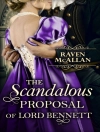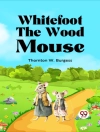In ‘Charlotte Brontë’s Juvenilia: Tales of Angria, ‘ readers are invited into the imaginative realm crafted by a young Brontë, encapsulated in a collection of narratives that reveal her early literary experimentation. These tales, filled with elaborate characters and vivid landscapes, exhibit a rich tapestry of Romantic influences, intertwining elements of Gothic fiction with the emerging themes of personal angst and social critique characteristic of her later works. Through stories like ‘Mina Laury’ and ‘Stancliffe’s Hotel, ‘ Brontë’s juvenile prose not only foreshadows her mature style but also serves as a crucial lens into her exploration of identity, love, and the complexities of human relationships in a patriarchal society. Charlotte Brontë, one of the most significant literary figures of the 19th century, was deeply influenced by her tumultuous upbringing and the literary milieu of her time. Born in 1816 in Yorkshire, England, she and her siblings created a fictional world known as Angria during their childhood, a creative endeavor that laid the foundation for her subsequent novels. This collection reflects her bold imagination and a fierce desire for self-expression, elements that were both cultivated and constrained by her societal environment. This collection is essential for readers who wish to delve into the formative stages of Brontë’s literary genius. It offers valuable insights into her roots as a writer, revealing the prolific creativity that would later culminate in her renowned works. A journey through these tales not only enriches our understanding of Brontë’s artistic evolution but also provides a timeless reflection on the struggles and aspirations that resonate across generations.
लेखक के बारे में
Charlotte Brontë (1816-1855) was an English novelist and poet, most famous for her novel ‘Jane Eyre’, which was published under the pseudonym Currer Bell. Born on April 21, 1816, in Thornton, Yorkshire, Charlotte was the third of six children in the Brontë family, whose patriarch, Patrick Brontë, was a clergyman. The premature death of her mother and two elder siblings profoundly affected her life and literary voice. Educated at the Clergy Daughters’ School at Cowan Bridge, Brontë later worked as a governess before turning to writing full-time. Together with her sisters, Emily and Anne, who were authors in their own right, Charlotte was part of a literary powerhouse that bore the weighty legacy of the Brontë name in English literature. The sisters initially published poems under male pseudonyms, a testament to the gender prejudices of the 19th-century publishing industry. Charlotte’s ‘Jane Eyre’, an immediate success, was distinctive for its intimate first-person narrative, complex moral and emotional intensity, and critique of social status and individual aspiration. Her other notable works, such as ‘Shirley’ and ‘Villette’, continued to explore themes of women’s independence, societal constraints and personal identity. Beyond her more famous novels, Charlotte’s juvenilia and early writings, collected in ‘Charlotte Brontë’s Juvenilia’, showcase her maturing literary talents and formative explorations into the imaginative worlds that later defined her major works. Brontë’s indelible influence on literature occurred in spite of personal hardships, including a largely isolated life and the tragic deaths of her siblings. Charlotte Brontë died on March 31, 1855, leaving behind a legacy that would inspire generations of readers and writers. Her work endures as an exemplar of 19th-century literary art, and her unique voice continues to resonate in the canon of English literature.












